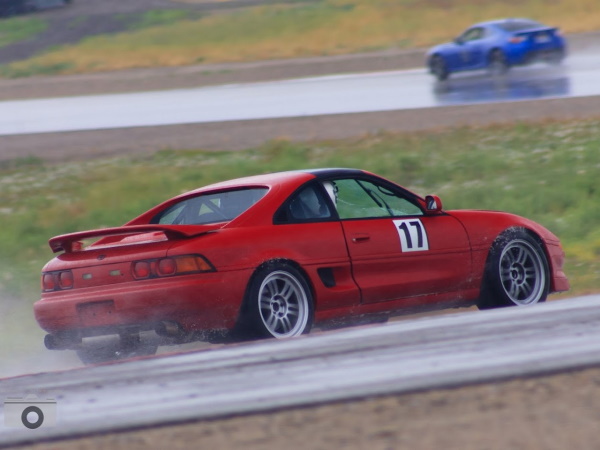All in all, 2016 was a pretty good driving season. Lots of track time, and other than the very last day, no major issues.
A few stats / facts from the season:
Trips to the track: 5
Track "days": 8
Approximate track time: 10 hours
Autocross events: 6
Typical highway gas mileage (towing tire trailer): 24-26 mpg
Typical "track" gas mileage: 6 mpg
Race weight: 2790lb, including me. I'm about 150, so that put the car at ~2640 with about a half tank of fuel. This was before I reinstalled the air conditioning system mid summer (that's right, my race car has AC!). With the AC, the car should be sitting at about 2700lb.
Racing "consumables" status:
Tires: The Maxxis RC1 (at least on my car) seems to last nearly forever. This set has all of this season on them, plus one trip to the track and seven autocrosses last season. The rears are just down to the wear bars. They may not be the stickiest tires in the world, but the value is incredible. I attribute this longevity in large part to my suspension geometry kit allowing me to run minimal amounts of rear toe. Ever since making this change a few years ago, tire wear has improved dramatically. It probably also helps that the tire are quite large for a small and relatively light car like the MR2.
Brakes: I started the season with a new set of (20mm thick) Porterfield R4 pads on the front, and a partially used set on the rear. The front pads ended the year at 10.4mm thick.
The Wilwood HD rotors were nearly new, with two track days and one autocross on them from the previous year, and at this point they show essentially zero measurable wear. Maybe a few thousandths of an inch at most. I think this is more a testament to how gentle on rotors those Porterfield pads are than anything.
For next year, I will buy new pads for the front, and swap the partially worn front pads to the rear where they should wear slower. Try doing that trick on stock brakes ;).
Personal best lap times at Utah Motorsports Campus:
Full: 3:34.1
With any luck, I can knock a few seconds off of all of those next year. I'm sure the car can do it, just need to tighten the nut behind the wheel.
Setup Notes:
I made a few setup refinements over the course of the year, but nothing too dramatic. By the end of the year, the basic setup that I was running was as follows:
Springs: 550lb front / 700lb rear
Sway bar: Whiteline front, center hole
Shock settings:
Front: 1.75 turns rebound, 3 clicks compression
Rear: 2 turns rebound, 4 clicks compression
Alignment:
Front Camber: -3°
Rear Camber: -3°
Front Toe: 1/16" total toe in
Rear Toe: 1/16" total toe in
Tire Pressures: 28psi cold, both front and rear. On a coolish (high of 70f) day this worked out to hot pressures of about 33psi front and 35psi rear, which seemed to work well. On a hot day, I would probably have to take some pressure out to keep those hot pressures, but lower than about 28 cold and it felt pretty slippery.
Failures / weak points discovered:
Alternator bracket / throttle position sensor / head gasket. You can read about this trifecta of failure in my previous blog post.
Air ducting to my top mount intercooler seriously needs to be improved.
My water injection system seems to be only running intermittently. I think that the solenoid is sometimes failing to open, or not opening fully. I may end up eliminating the solenoid and just running the pump direct to the nozzle.
Winter Plans:
Rebuild the motor. At the very least I need to fix the head gasket, but this motor has also been burning a lot of oil, so really it's time for a more thorough refresh.
Fix my other issues mentioned above.
New / adjustable control arms. Drop some weight, and also improve the camber curves by lengthening the control arms. Hopefully I can add enough camber via the control arms and remove it at the knuckle that I can eliminate some / all of my wheel spacers. This should result in a simpler and lighter setup, with better camber curves, and a little bit better scrub radius in the front as well.
And, probably some other little little fixes / improvements that I am forgetting about right now.

